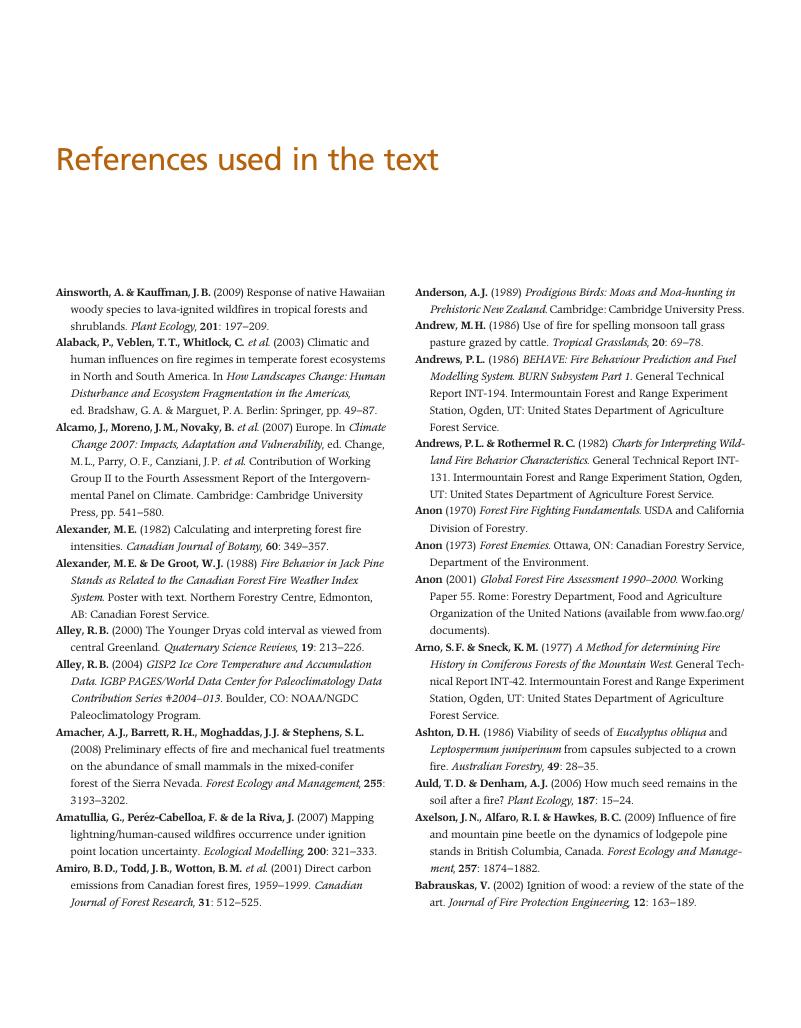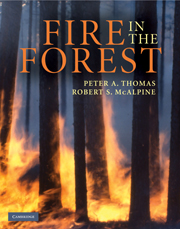Book contents
- Frontmatter
- Contents
- Preface
- List of contributors
- 1 In the beginning
- 2 Historical review
- 3 How a fire burns
- 4 Fire in the wild landscape
- 5 Fire ecology
- 6 The benefits of fire and its use as a landscape tool
- 7 Fire suppression
- 8 Wildland fire and its management – a look towards the future
- Further reading
- References used in the text
- Index
- References
References used in the text
Published online by Cambridge University Press: 05 August 2012
- Frontmatter
- Contents
- Preface
- List of contributors
- 1 In the beginning
- 2 Historical review
- 3 How a fire burns
- 4 Fire in the wild landscape
- 5 Fire ecology
- 6 The benefits of fire and its use as a landscape tool
- 7 Fire suppression
- 8 Wildland fire and its management – a look towards the future
- Further reading
- References used in the text
- Index
- References
Summary

- Type
- Chapter
- Information
- Fire in the Forest , pp. 212 - 222Publisher: Cambridge University PressPrint publication year: 2010



